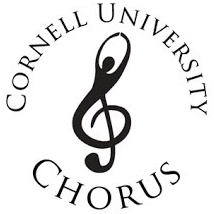Major Works
June 3rd, 2016
This spring, the Chorus joined forces with the Glee Club to perform our annual Major Works Concert. The concert featured works by mid-20th century European composers Gustav Holst, Veljo Tormis, and Frank Martin, who set ancient texts to varying genres of choral music. The Glee Club performed Tormis’ haunting Incantatio maris aestuosi, written in remembrance of the victims of the 1994 sinking of the MS Estonia, and the terrifyingly profound war rumination Curse Upon Iron, also by Tormis. The Chorus began with Gustav Holst's lovely eight-part Ave Maria, his first published work. We continued with Holst's Choral Hymns from the Rig Veda, a harp-accompanied setting of four poems from the ancient Sanskrit text, which has survived over three thousand years in the Hindu tradition. At the time of the piece's composition, Holst was fascinated by the Sanskrit language, and felt passionately that the existing English translations of the Rig Veda did not sufficiently express the sentiment of the text; in fact, the English used in Choral Hymns from the Rig Veda is a translation by Holst himself. The two contrasting pieces are a testament to Holst’s ability to span genres, moods, and religions; each movement of Choral Hymns from the Rig Veda summoned a unique aura, while Ave Maria was, uniformly, what our director Robert Isaacs aptly described as “a vocal hug”. The latter piece is lyrical, sweet, and a joy to perform.
The concert concluded with Frank Martin’s Mass for Double Choir. The stunning a cappella mass, composed for SATB/SATB, is teeming with emotions ranging from sorrowful to jubilant. When asked to choose a favorite part, almost every choir member had a different answer. Each of the five movements is unique, yet they all fit together in one overwhelmingly beautiful piece. To create a double choir, Robert combined the upper voices in each section (i.e. Soprano 1, Alto 1, Tenor 1, and Bass 1) to create Choir I, and used the lower voices to form Choir II. Members of the choirs appreciated the opportunity to sing and rehearse in smaller groups. A bit of a friendly rivalry emerged between Choir I and Choir II. Choir I was the true winner, but, as a Soprano 1, I may be a little biased.
Interestingly, the mass was never meant to be performed; Martin wrote it as a private spiritual meditation. Years later, Martin’s friend discovered it and persuaded the composer to share it with the world. We are so fortunate that it was published and to have performed one of the finest masses of the 20th century for our Major Works concert.
Christina Lee ‘18


